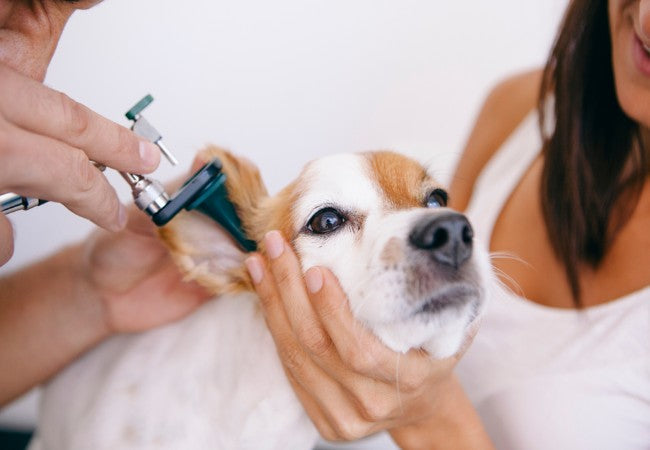Managing Hearing Loss in Senior Dogs in 2025: Vet‑Guided Care Tips 🐶👂

In this article
Managing Hearing Loss in Senior Dogs in 2025: Vet‑Guided Care Tips 🐶👂
By Dr. Duncan Houston BVSc
🔍 Recognizing Hearing Loss
Hearing decline is common in senior dogs (9+ years) due to age-related nerve degeneration and central processing issues—not always ear disease. Watch for decreased responsiveness to verbal cues, lack of alertness to household sounds, or failure to react to your approach.
🩺 Medical Evaluation & Reversible Causes
Schedule a veterinary check to rule out ear conditions like wax buildup, infection, mites, or growths—some of which can be treated and restore hearing. Treatment may include cleaning, medication, or minor procedures.
🖐️ Communicating with Hand Signals
Teach clear, simple hand gestures for basic commands like “sit,” “stay,” “come,” and “down.” Older dogs can learn new signals—it’s never too late. Reinforce signals consistently with treats and praise.
🚨 Alternative Cues & Attention Signals
- Vibrations: stomp or tap the floor to gain attention.
- Lights: flash a torch or turn lights on/off gently.
- Olfactory cues: waft a treat or appealing scent before signal.
🏠 Environmental Adaptations & Safety
- Keep furniture and pathways consistent to avoid disorientation.
- Use fencing and keep the dog leashed during outdoor time—he may not hear dangers.
- Place tactile markers—like textured mats—near stairs or thresholds.
- Add identification tags stating “I’m deaf” in case of escape.
🏥 Assistive Tools & Technology
Consider vibration collars (not shock-based) as a remote attention aid—ensure proper fit and veterinary approval. For partial loss, storm whistles may help in emergencies.
🧘 Enrichment & Emotional Support
- Increase mental stimulation using puzzle toys, scent games, and interactive enrichment.
- Avoid startling: approach within sight, tap shoulder first, or use scent-based approaches when waking.
- Stay calm: senior dogs sense stress—maintain a patient, reassuring tone.
📅 Ongoing Monitoring
Check hearing periodically to detect changes or treatable issues. Inform all caregivers (sitters, groomers, walkers) of the dog’s deafness—communication consistency is key.
🔚 Final Thoughts
Hearing loss is a normal part of aging in dogs. With veterinary evaluation, visual signals, communication tools, environment adjustments, and gentle routines, your senior dog can continue to enjoy a safe, fulfilling life alongside you.






